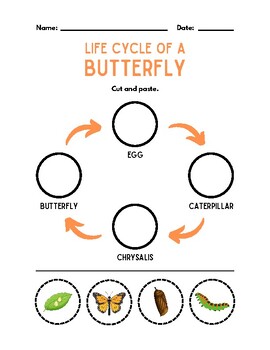Life Cycles Cut and Pastes
- PDF
Description
Use these life cycle cut and paste worksheet to help students identify life cycles of a butterfly, frog, chicken . Students can cut and paste to show the lifecycle of each animal.
****************************************************************************************************************
Questions?
Feel free to send me a question through my store
Comments and Feedback
Leaving feedback awards you credits towards future purchases in all TPT stores! I appreciate your positive comments and 5 star ratings. If you have a concern with the product, please contact me before rating and I'm happy to help!
Thank you for your interest in my store
****************************************************************************************************************
Questions?
Feel free to send me a question through my store
Comments and Feedback
Leaving feedback awards you credits towards future purchases in all TPT stores! I appreciate your positive comments and 5 star ratings. If you have a concern with the product, please contact me before rating and I'm happy to help!
Thank you for your interest in my store




